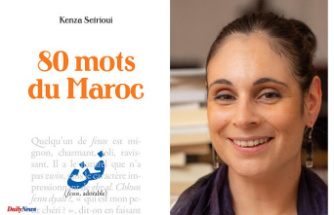Investors can follow special strategies to get more returns on their investments. But they have to believe in it and survive dry spells.
Some might call the stock market a casino. Wouldn't it be nice if you knew exactly which characteristics of a company or stock promise success? "Scientists have been dealing with the question of what really systematically influences risk and return in securities for decades," says Gerd Kommer, investment banker and author.
And research has actually found some factors that, according to statistics, promise a higher return. Investors can take advantage of this by aligning their strategy accordingly. A basic advice when investing is often: diversify widely - for example with an index fund that replicates the MSCI World. This is how you invest in the global stock market with just one product.
Those who follow a factor strategy are more targeted and focus on selected companies that meet certain criteria. The hope: With such factor-based investments, the return should be higher than in the broader market. The most important factor strategies, also known as smart beta strategies, are as follows:
Whether factor strategies work has been scientifically examined time and time again. For example, a research team from Erasmus University Rotterdam has calculated some strategies back over a period of up to 200 years. In doing so, the scientists found that a wide variety of factors enable an average excess return over a long period of time - i.e. a higher return than that of the comparable market.
"But the return on a factor strategy is not always better than the market over a period of time," says Max Schmutzer, an investment expert at Stiftung Warentest. No one can predict how long investors will have to persevere in order to be successful with their strategy.
Stiftung Warentest has looked at factor premiums over the past 20 years. For example, anyone who invested in value stocks during this period was left in the dark. The strategy slightly underperformed the market. So if you simply invested in the MSCI World, you got a higher return. Value, on the other hand, did better over 200 years, according to the Dutch study. The excess return was more than two percent. The momentum strategy performed best in both studies.
"In the long term, you're ahead with a strategy like this. But many people can't handle the risk that the factor will temporarily pay less than the market," says Gerd Kommer. "You have to be able to digest that." Factor investing is therefore only suitable for investors who want to invest their money in the long term and don't get cold feet so quickly in bad phases and change everything. "You also have to deal with the factors. You should only invest your money in this way if you understand at least the basics of the theory behind it," says the investment banker.
However, that doesn't mean retail investors should start picking individual companies now. "The factors are a purely statistical phenomenon, so they don't work for individual stocks," warns Kommer. It is therefore important to invest your money in many companies at the same time that meet the criteria. Private investors can, for example, invest in funds, preferably ETFs, that follow a factor strategy.
The range of so-called factor or smart beta ETFs is constantly growing. "They invest in a selection of stocks that are included in larger indices. The investment universe is automatically divided according to fixed rules," explains Schmutzer. For example, the Momentum Index of the MSCI World includes the 30 percent of the companies in the benchmark index that have recently performed best.
Factor ETFs have slightly higher fees than those without a strategy. According to Schmutzer, investors have to reckon with administrative costs of between 0.5 and 0.8 percent. These are costs that you have to recoup with a higher return. Stiftung Warentest only recommends smart beta funds as an admixture to a broadly diversified index fund. "Investors can also combine different factor ETFs. The share of one of these ETFs should not exceed ten percent," says Schmutzer.
Gerd Kommer, on the other hand, advocates making a decision: Either investors follow the market neutrally, without a specific focus. Or they rely on factor ETF. After all, with factor investing you only buy a subset of MSCI World, for example. "If you mix the two, you sometimes have the same thing twice. That dilutes the advantage through the factor," says Kommer. He advises combining several strategies to diversify the investment. If you like it easy, you can also buy a multi-factor ETF that uses different strategies at the same time.












